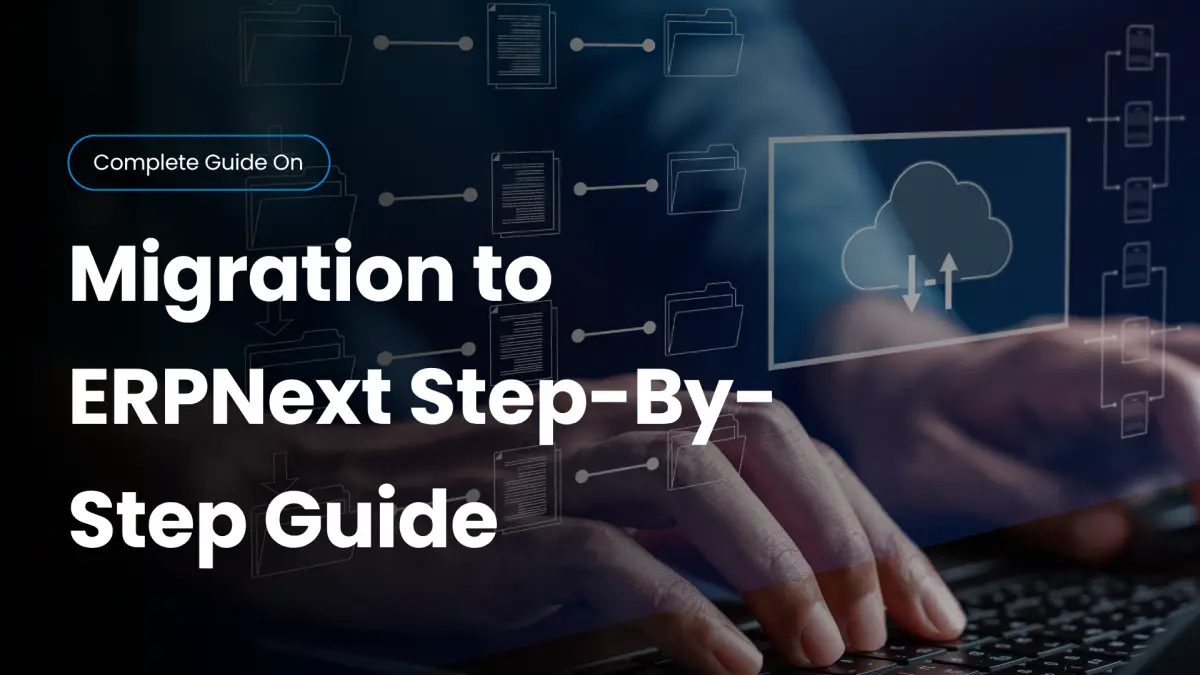Migrating to a new ERP system like ERPNext can revolutionize your business processes—if done right. This comprehensive guide walks you through each step of the migration journey, from planning to post-implementation support. Whether you’re replacing a legacy system or upgrading from spreadsheets, knowing exactly how to migrate ERPNext can save time, reduce errors, and boost performance.
Choosing the right ERP system is a game-changer. But what makes ERPNext stand out in today’s fast-moving world of digital transformation? The answer lies in its flexibility, ease of use, and cost savings. If you want to modernize enterprise resource planning and unlock business growth enablement, this guide is for you.
Table of Contents
- Why ERPNext?
- Step 1: Assess Current System and Define Objectives
- Step 2: Plan the Migration
- Step 3: Setup ERPNext
- Step 4: Data Migration
- Step 5: Train Your Team
- Step 6: User Testing and Go Live
- Step 7: Post-Transfer Assistance and Improvement
- Common Difficulties as well as How to Overcome Them
- Additional Tips for a Smooth ERPNext Migration
- FAQs
- What is ERPNext?
- How long does ERPNext migration take?
- Can I migrate to ERPNext without losing data?
- Is ERPNext suitable for my industry?
- Conclusion
Why ERPNext?
ERPNext is an open-source ERP built to simplify and automate complex business processes. It offers a full suite of tools under one roof. You get powerful modules like accounting, HR, CRM, inventory, and even project management. Everything is integrated for business operations optimization.
Unlike expensive ERP software, ERPNext is free to use and fully customizable. You can host it yourself or choose cloud-based ERP options. This flexibility makes it ideal for small to medium businesses. Whether you want better inventory accuracy, smoother financial reporting, or more agile workflow configuration, this platform delivers.
| FeatureERPNext Offering | |
| Pricing | Free (Open-source license) |
| Deployment Options | Cloud hosting vs. on-premise |
| Key Modules | Accounting, HR, CRM, Inventory |
| Customization | Easy with custom scripts |
| Support | Community-based or via implementation partner |
Step 1: Assess Current System and Define Objectives
Before you jump into ERP migration, take time to understand your current setup. List out what works and what doesn’t. Is your legacy system slow? Does it limit growth? Is it hurting your business process automation efforts? These are signs it’s time to switch.
Next, set goals. Ask yourself: What do we want from our new ERP system? Better customer records? Smoother sales tracking? Automated stock management? Once your goals are clear, form a team. This team should include IT staff, department heads, and end-users. Involve them early for strong stakeholder engagement. Finally, audit your data. Start data cleansing to fix duplicate or outdated entries.
Step 2: Plan the Migration
Without a solid plan, your ERPNext migration can derail quickly. Create a timeline with clear stages. Include testing, training, and a go-live strategy. Expect surprises—so add buffer time. Cost is another key part. List all expenses, from licenses and staff hours to third-party costs.
Define the implementation strategy. Decide whether you’ll use a phased approach or switch all at once. A phased rollout often works better for smaller teams. Also, prepare a map for your data. Know where each field in your old system will go in ERPNext. Create fallback plans in case of failure. Planning is half the battle in any ERP migration.
Step 3: Setup ERPNext
Now it’s time for system setup. Choose between cloud hosting vs. on-premise. If your team lacks technical expertise, cloud-based ERP is often simpler. Hosting it on your own servers gives more control, but requires deeper IT knowledge.
Install ERPNext using Frappe Bench or similar tools. Then configure it based on your business model. Choose only the modules (accounting, HR, CRM, inventory) you need. This keeps the interface clean and makes training easier. Tailor forms, dashboards, and reports. Use custom scripts to automate routine tasks or create workflows. Every setup is different—customization is what makes open-source ERP so powerful.
Step 4: Data Migration
One of the hardest parts of how to migrate ERPNext is moving your old data. Start with data cleansing. Remove invalid entries, fix errors, and unify formats. Clean data leads to better decisions and fewer bugs. This step is vital for strong inventory accuracy and reliable financial reporting.
Next, use ERPNext’s data import tool to transfer records. You can upload CSV files or use custom scripts for more control. Always do a test migration in a separate sandbox. It helps catch issues early. Check field mapping, test links, and verify totals. After that, validate data by comparing sample outputs. You don’t want to discover errors after going live
Step 5: Train Your Team
Even the best ERP system fails without proper user training. Start with a simple manual tailored to each team. Then move to videos, live demos, and workshops. Make training hands-on. Use real-world cases from your own data. This makes learning faster and boosts user adoption.
Assign champions in each department. These people can help others during daily operations. Encourage open questions and feedback. Use a support portal or internal chat to address concerns. Strong training leads to smoother transitions and fewer support tickets
Step 6: User Testing and Go Live
Now it’s time for final testing. This step is called User Acceptance Testing or UAT. Involve all departments. Let them try critical tasks like sales entries, purchase approvals, or warehouse transfers. This ensures nothing breaks during real use. Try out third-party integrations like payment gateways or shipping tools too.
Once testing is complete, decide on a go-live strategy. Pick a time when business activity is low. This helps reduce pressure. Keep both systems running side-by-side—this is called parallel operations. It gives users time to adjust and catches any last-minute issues. If possible, launch in phases. Start with one department, then roll out to others.
Step 7: Post-Transfer Assistance and Improvement
Going live isn’t the end. Monitor everything. Track errors, logins, and module usage. Use tools for system performance monitoring. If something seems off, fix it quickly. Keep talking to users—gather feedback on what’s confusing or slow.
Offer support through an internal helpdesk or a hired implementation partner. Schedule regular check-ins. Look for ways to optimize. You can automate tasks, tweak reports, or explore new customization options. Stay updated with the latest features through the ERPNext community. They often release updates, tips, and scripts to improve performance.
Common Difficulties as well as How to Overcome Them
The most common problem during ERP migration is poor data. Fix this with early data cleansing. Standardize formats and remove duplicates.
Resistance to change is another hurdle. Handle this with clear change management. Show users the benefits. Offer rewards for quick adoption. Time and cost are also often underestimated. Add extra time to your plan and budget for hidden costs. Also, don’t skip testing. Proper UAT prevents post-launch chaos. Finally, if your internal team lacks expertise, hire an implementation partner or join the ERPNext community for help.
Additional Tips for a Smooth ERPNext Migration
Always back up your old system before starting. Keep daily snapshots until the new system runs smoothly. Document each step. It helps in case you need to redo anything or train new users later. Include all departments in meetings and updates. Everyone uses the ERP system, so everyone matters. Use version control when customizing code or workflows. If something breaks, you can revert quickly.
FAQs
What is ERPNext?
It’s an open-source ERP platform for automating and managing business operations like sales, accounts, HR, and inventory.
How long does ERPNext migration take?
It depends on the size of your data and team. A typical small business takes 2 to 6 months.
Can I migrate to ERPNext without losing data?
Yes. With careful planning, data validation, and a strong data import tool, you can avoid data loss.
Is ERPNext suitable for my industry?
Most likely, yes. It supports retail, services, healthcare, education, and manufacturing. Plus, it’s easy to modify.
Conclusion
Migration to ERPNext is a smart move for businesses ready to modernize and grow. With the right planning and teamwork, this change doesn’t have to be scary. In fact, it can be smooth and rewarding. Whether you’re a startup or a growing enterprise, knowing how to migrate ERPNext correctly can unlock new levels of business operations optimization. Follow each step, keep your users involved, and never skip the testing. Most importantly, remember that every successful ERP system launch is built on solid planning, clean data, and great communication.
If you’re serious about transforming your business, then this guide is your first step toward lasting success.

